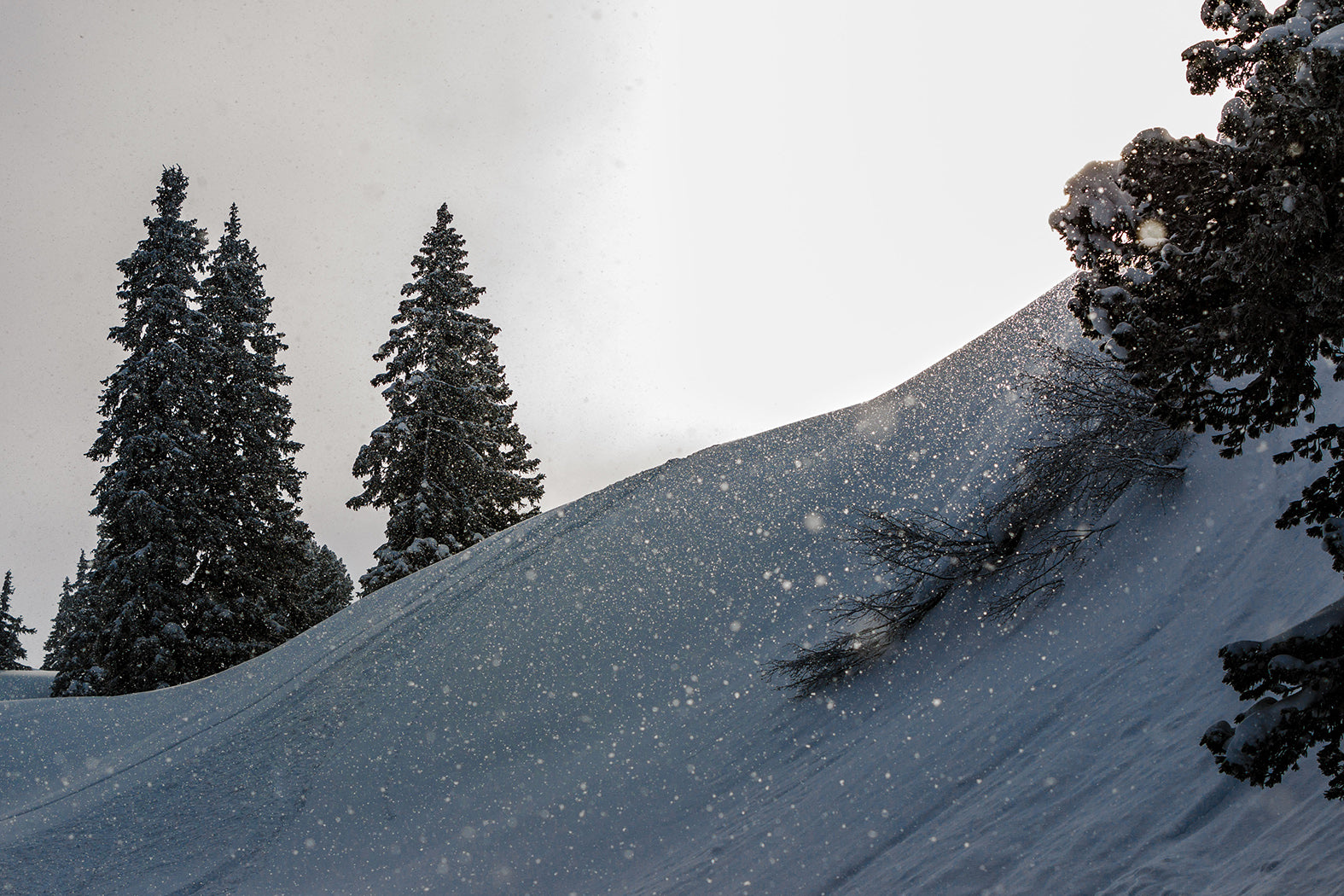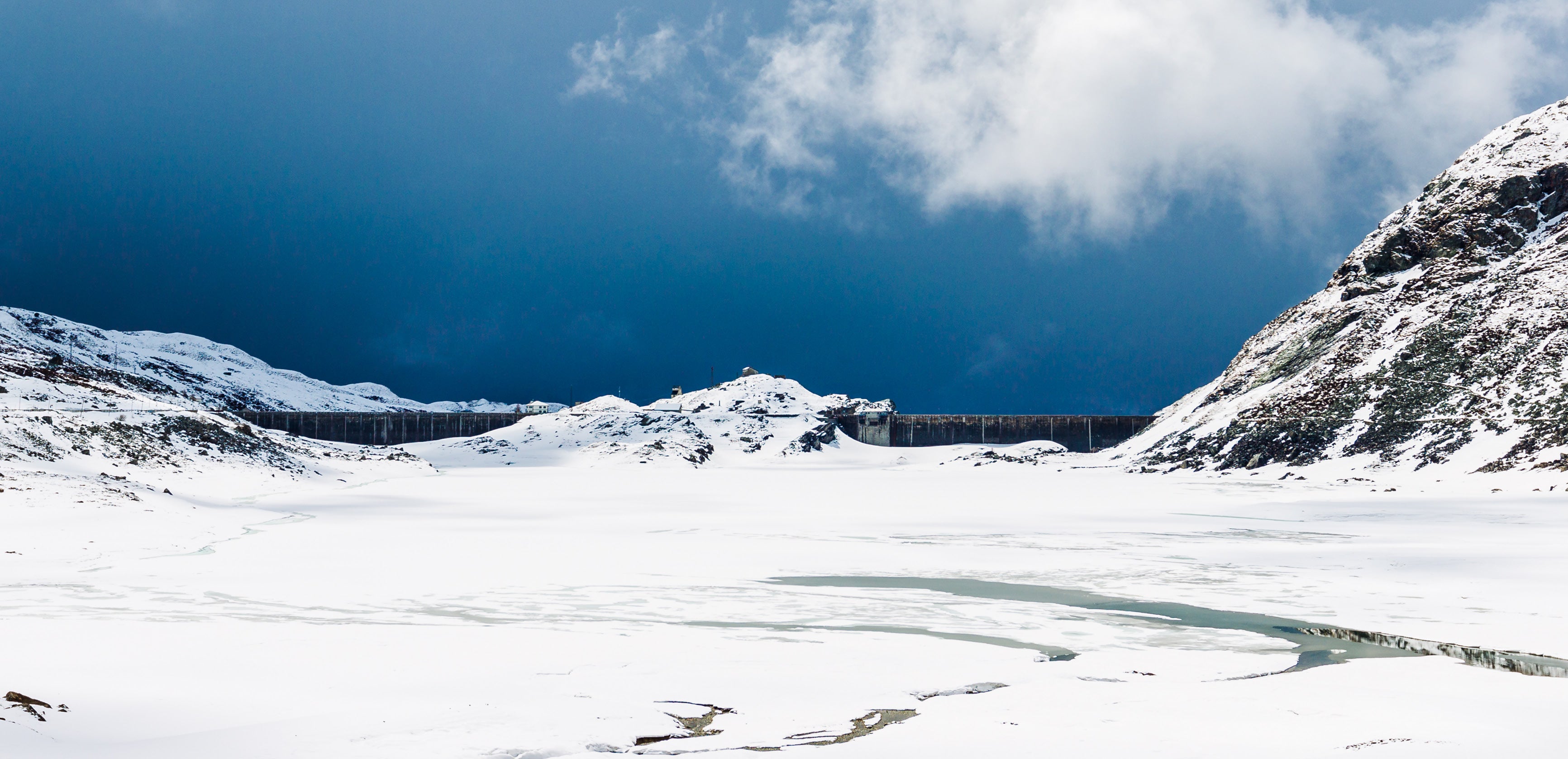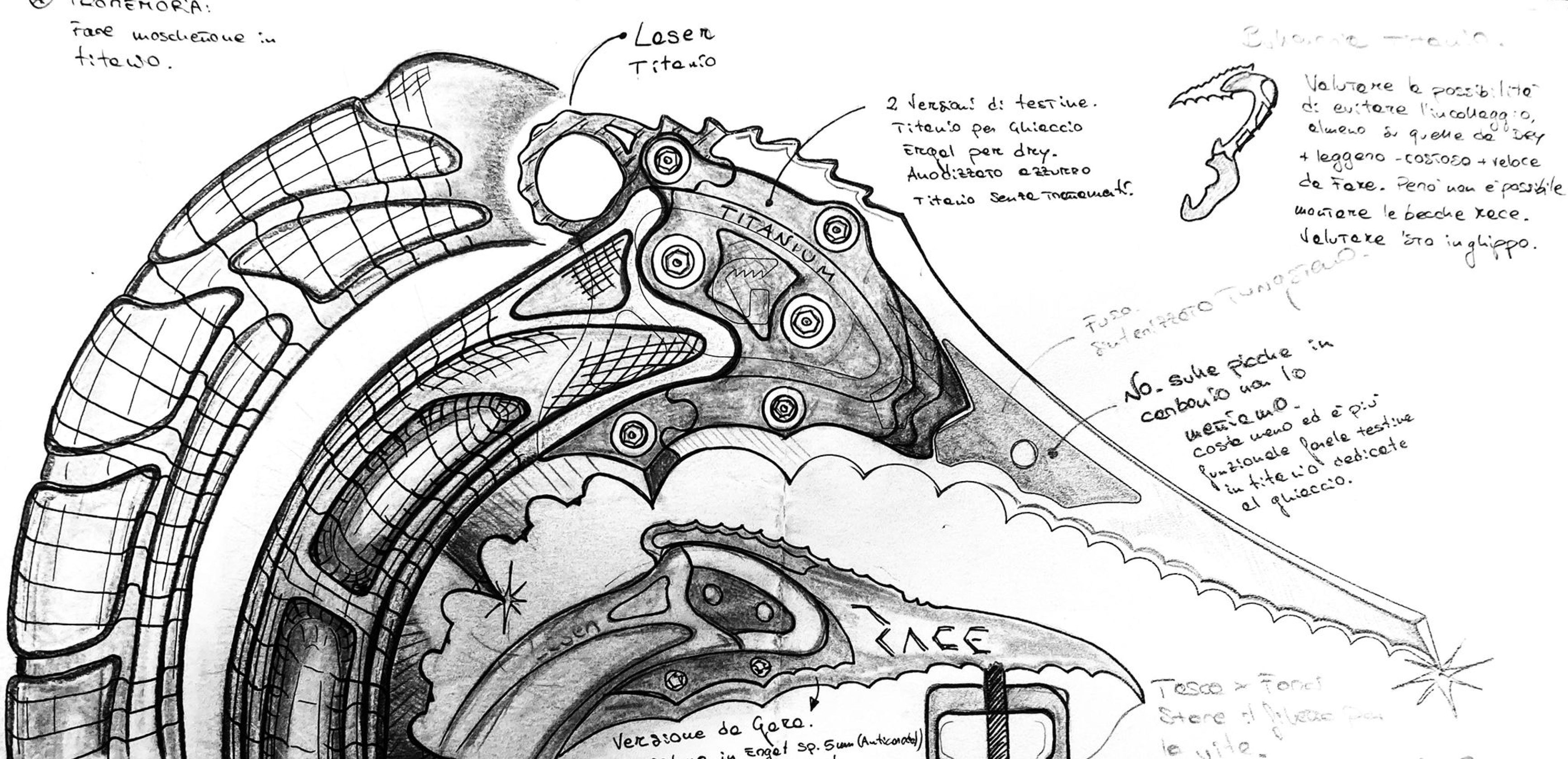
200 ways to say snow, plus 1 by Marco Grasso
Published on 15/02/2022
And once again it didn’t come. Or, at least, it didn’t come as we expected and possibly it won’t, in another non-wintry winter in the place where we are writing about it. The snow, yes, the snow that in wintertime should, at least in our hope of children of a bygone snow-rich time, be part of the postcard set of our well-deserved fun holidays. And when there is, the supposedly white snow looks more like whitish rags spread on a brown floor, fake, in fact.
Talk of snow, and there you go… mountains, the giants that tower above us, who look at them with awe. They, these giants, have followed their trajectory – which dates back millions of years – with undetectable modifications. However, the long-lasting ecology of mountains couldn’t withstand the 70 years great acceleration of the Anthropocene. The order of things seems to have gone upside down: humanity is unraveling the ecological life of mountains, something unthinkable only a few years ago. Mountain are changing color, odor, shape; they are losing their identity, just as their ecology changes and their people live their brave new live in a new, almost dystopian, reality.

Yet, every year history – one of the many minute yet important histories of our stupefied time – repeats itself: millions of non-mountain people move temporarily to the mountains in search of what until a few years ago they – we – could enjoyed effortlessly, ‘naturally’: snow. And when this crowd moves, other people – mountain people – brace to welcome them and to ensure that they have the expected fun. And so, a circuit where tourists and tourism workers, traders and entrepreneurs meet in an environment born millions of years ago is delimited. 44% of the world’s skiers choose the Alps as their playground; more than 100 million people visit the Alpine region every year, an astounding 12% of all tourists worldwide. Indeed, the winter tourism industry contributes significantly to the economy of the countries of the Alpine arc: it generates almost 50-70 billion dollars in annual turnover and provides between 10 and 12% of jobs in the region.

Setting aside the unimaginative world of economics, mountain used to produce imaginations of adventure, leisure, challenge, gain, and everybody is looking for snow and for the fun that it brings about. And while climate has changed, the same doesn’t hold for the habits of those who carry on as if it hadn’t. A particular case of irrational non-adaptive behavior, apparently: have they – we – all gone mad? Or is it simply that changing habits, especially pleasant ones, is not exactly one of the easiest tasks in life?
At any rate, snow is not just an aesthetic extra, a plus up there just for magic and fun; it plays an important role in regulating the climate: it reflects the incoming sunlight back into space, preventing the planet from warming up, the so called albedo effect crucial in cooling the planet. Snow, in fact, supports life. In many parts of the world its melting is an essential element for human and animal life, and for crops. Melting snow hydrates the soil, supporting a multitude of life forms and, by keeping the soil hydrated, it contributes to the reduction of fire risks. Snow is an important factor in the socio-ecological regulation of the life of many people.

These specificities have been acknowledged by the Inuit – the only indigenous people left in Europe – who have more than 200 words to christen snow. One might think that this is just hair splitting; but in fact, it is quite the opposite. As people who wrote their history in snow, distinguishing meticulously its particularities is an indispensable factor of pragmatic orientation for Inuit. The problem with the latest snow Inuit witnessed is that they do not have a name for it. It is a different, almost useless snow which doesn’t contribute to the support of life as it used to do in those harsh territories.
Contrasting the civilization-threatening challenge of the Inuit people with the disappointment of tourists about the lack of snow is almost profane. For Inuit, the fundamental question is stopping the main cause of the lack of snow, i.e., climate change which, literally, dooms their way of life. For many of those who seek snow for fun and leisure, its disappearance will not certainly have the same implications. Indeed, for those who made a livelihood on snow the ‘snow crisis’ will produce effects that, if not as catastrophic as those suffered by the Inuit, will still be very serious.

And, willing or not, this catapults us into the dangers of mountains’ ‘monoculture’ and the demand for a ‘good’ that can no longer be ‘produced naturally’ with the comforting regularity we were used to. Of the 200 names for the snow of the Inuit, we have to come to one in our alpine resorts: artificial – yes, fake – snow, produced through the use of water, energy and money devouring beasts. Fake snow must reproduce what the environmental psychologist James Gibson has defined as “affordances”: a surface suitable for the practice of different kinds of sports in the mountain environment. By the way, fake snow is the only snow – produced, though Italian technology, using 1.3 million liters of water – of the 2022 Beijing Olympics.
The Eurac Research dossier “Snow” describes the looming snow crisis in the Alpine region: “By the end of the century, current snow cover conditions could shift 500-1000 meters higher, i.e. by 2100 snow conditions at 2000 meters will correspond to those found today at 1000-1500 meters”. Legambiente, WWF Italia and the Club Alpino Italiano already expressed their opposition to the massive use of fake snow to reproduce, albeit approximatively, snow experiences. The main reasons are environmental, economic and social. Snowmaking systems are impressive assemblages of water collection devices and tanks, pumps; pipes (for water, electricity, compressed air); withdrawal points; warehouses; compressors; power systems and underground cables; control system; cooling systems; small weather station; snow makers. According to the autonomous province of Bolzano-Alto Adige “With 1 m³ of water, an average of 2.5 m³ of snow can be produced. To achieve a snow layer of 30 cm (basic snow cover) on one hectare of ski slopes, about 1000 - 1200 m³ of water are needed. In the 2018-19 season, approximately 11 million cubic meters of water were used for scheduled snow production”.

To get an idea of what these figures mean, a comparison is in order. According to the International Commission for the Protection of the Alps (CIPRA), the 23,800 hectares of possibly artificially snowed runways would require around 95 million cubic meters of water per year, which is equivalent to the annual consumption of a city of 1.5 million people; the total energy consumption would be 600 GWh, roughly corresponding to the annual electricity consumption of 130,000 families of four. One kilometer of fake snow costs about 930,000 euros.
In another article we have already talked about the overall cost of ski infrastructures in the new unfavorable climatic conditions. And that must include the cost of fake snow. We cannot simply ignore the additional burden of offering fake snow to those who seek and find in mountain areas the opportunity to have experiences impossible elsewhere. To the already visible ruins of a gone era of snow abundance, we are adding new ones. And the problem is once again pushed forward in the hope that our children will be more resolute – or simply smarter – then us and make more reasonable choices in the face of an irreversible situation.

Marco Grasso is Professor of Economic and Political Geography at the Università of Milan-Bicocca. His research interests include international environmental policy and climate change governance. He currently works on a project on the role of the fossil fuel industry in climate change and the decarbonisation of energy systems.


